*EXCLUSIVE* New Guinea (Lakona) - Huon Peninsula Campaign - 8th Photo Squadron Aerial Reconnaissance Map

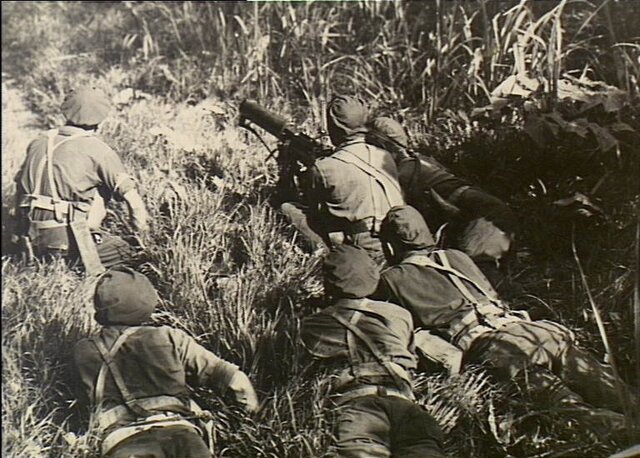

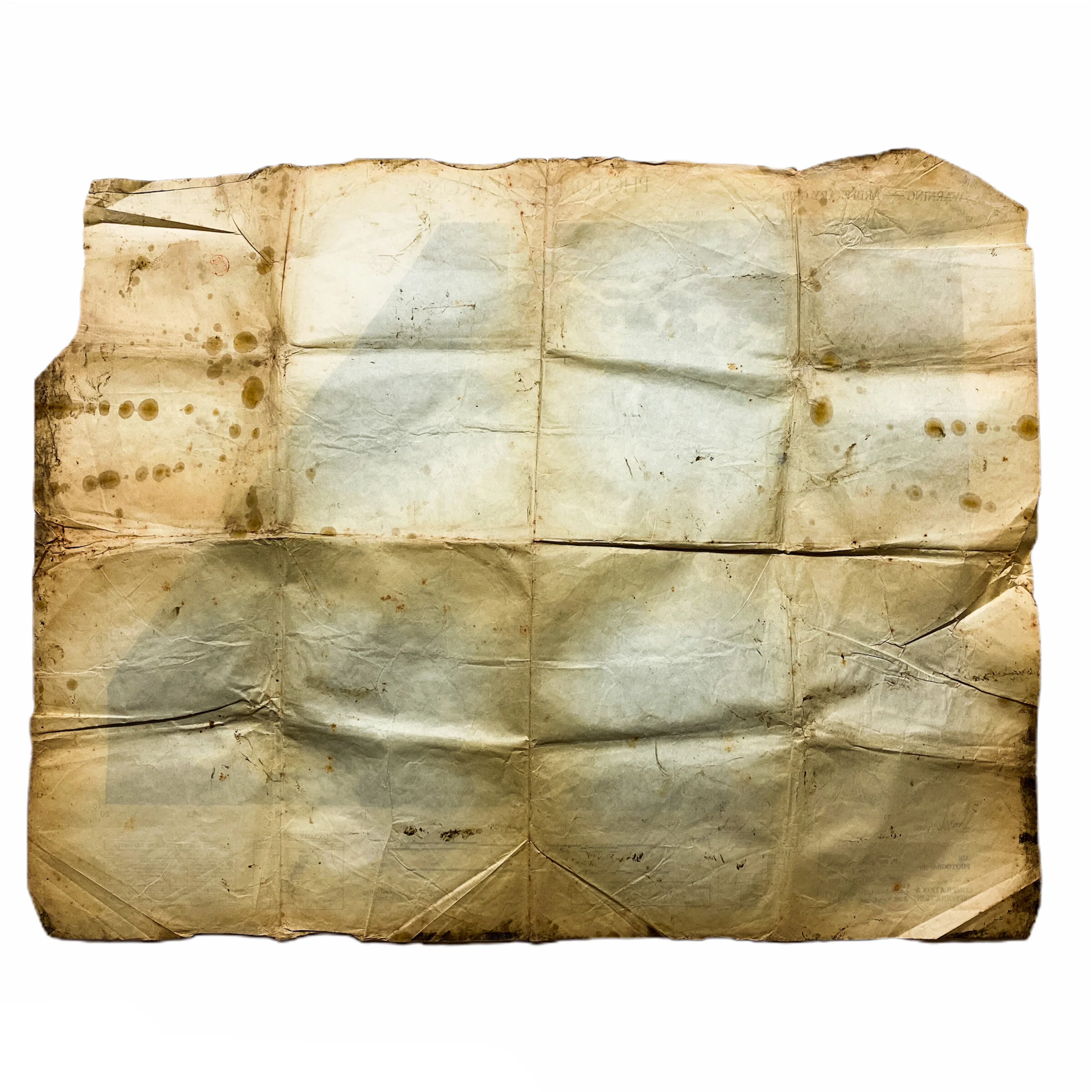
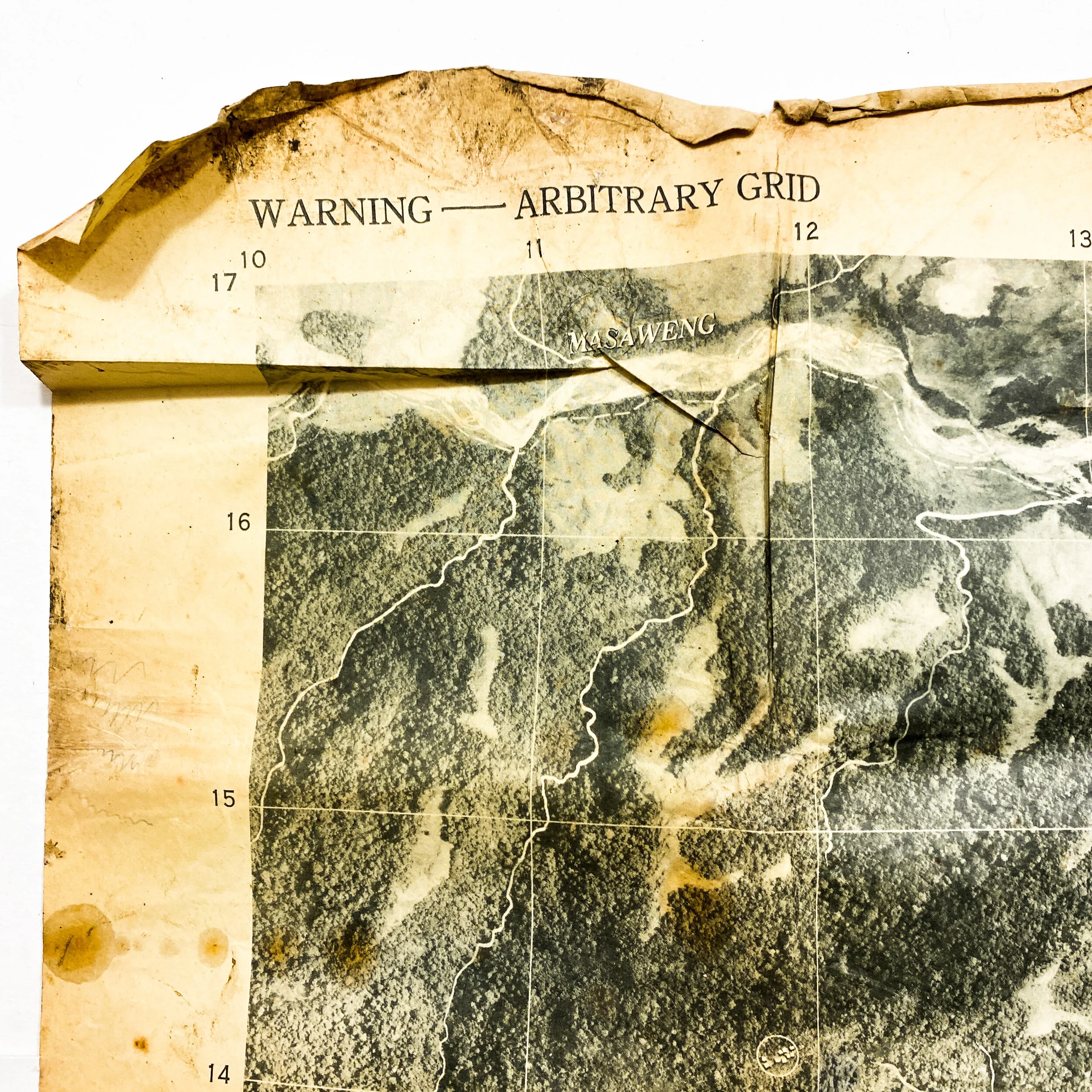
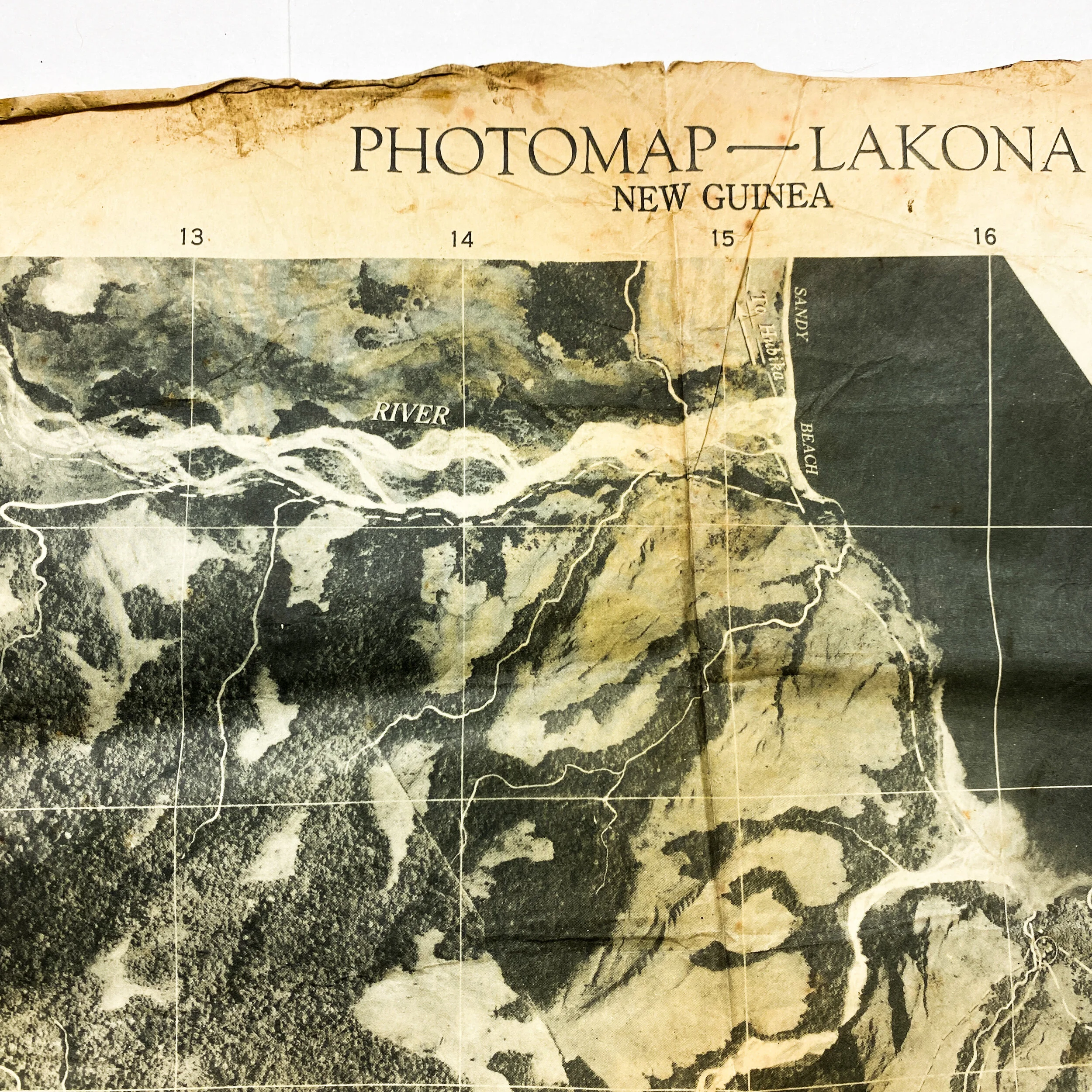


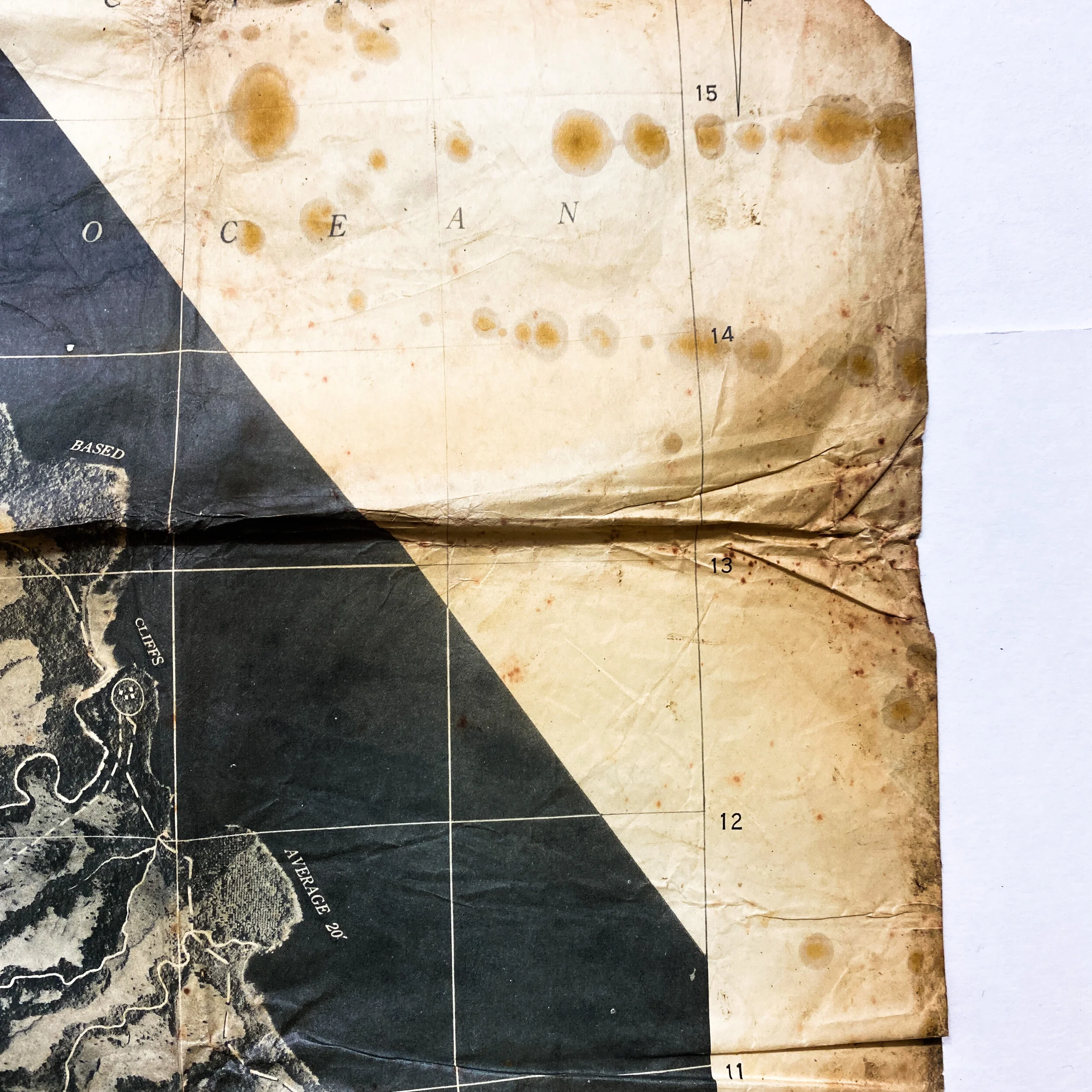



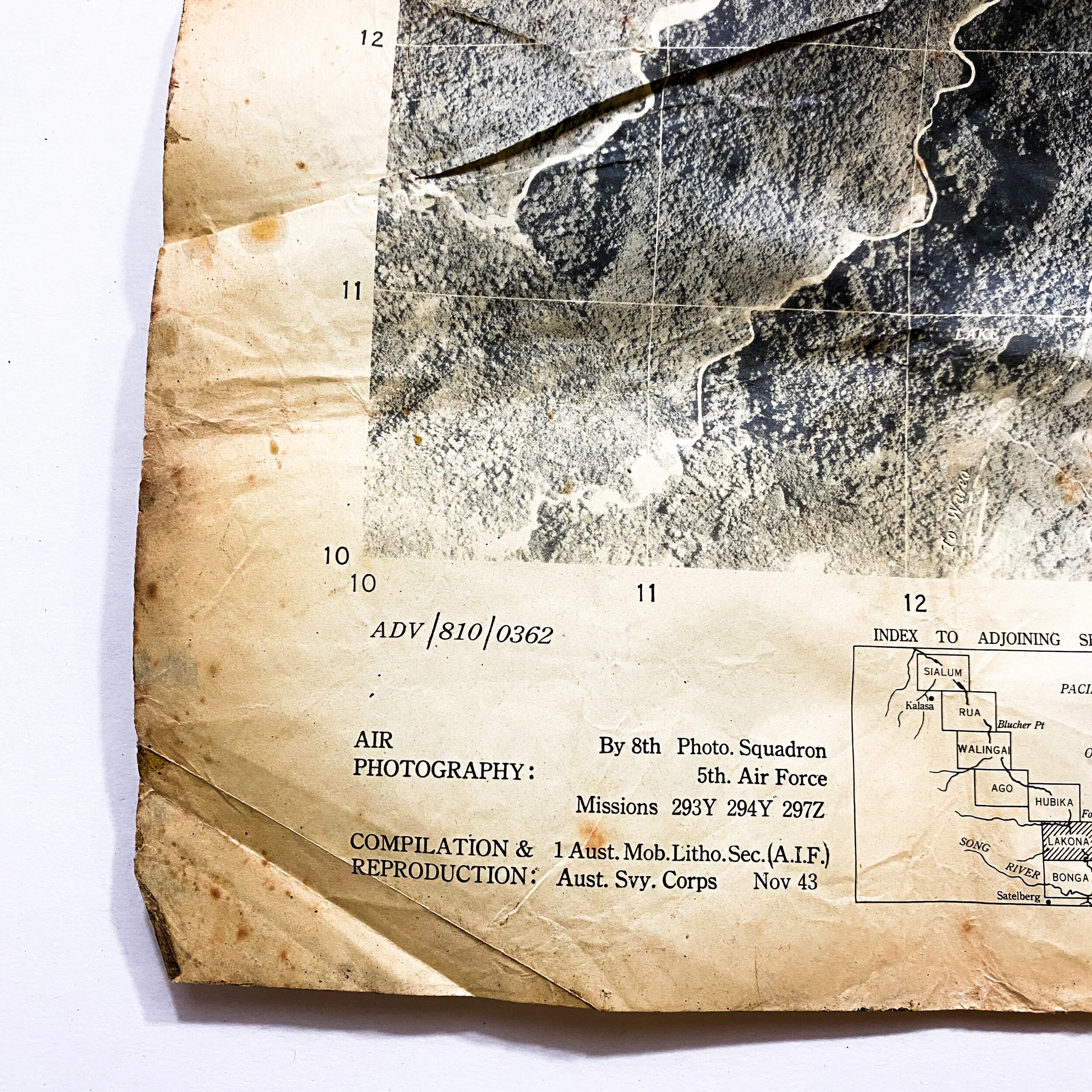




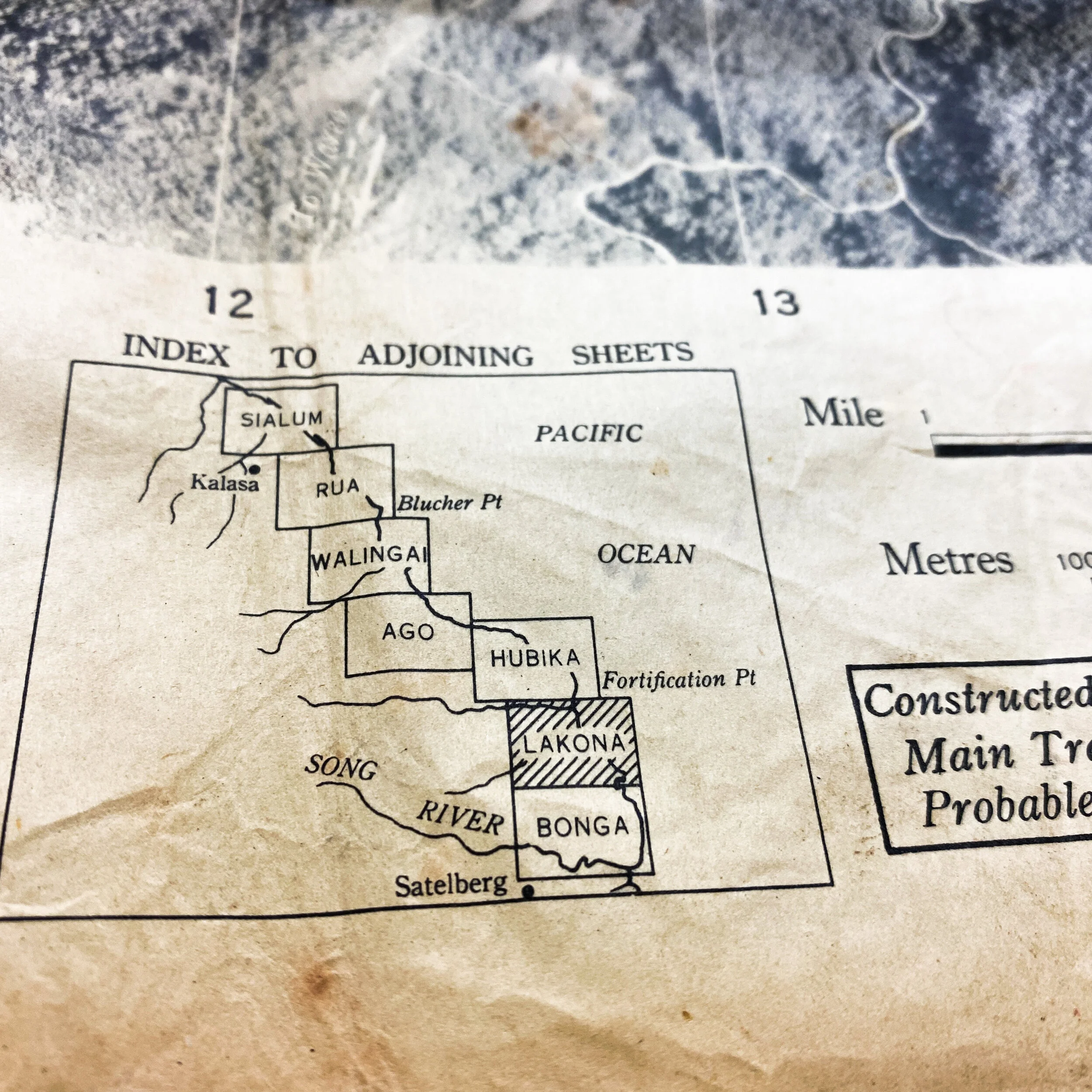
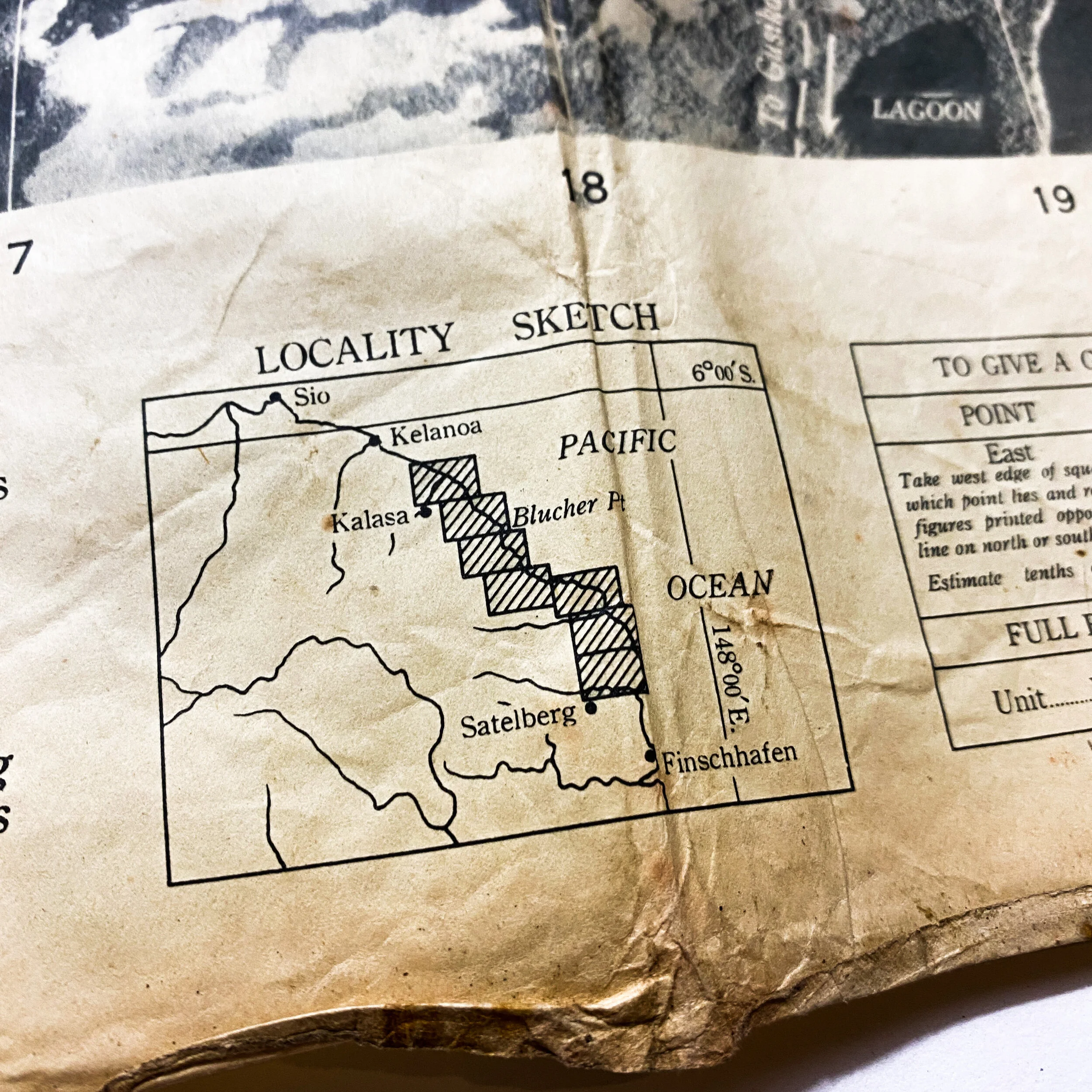



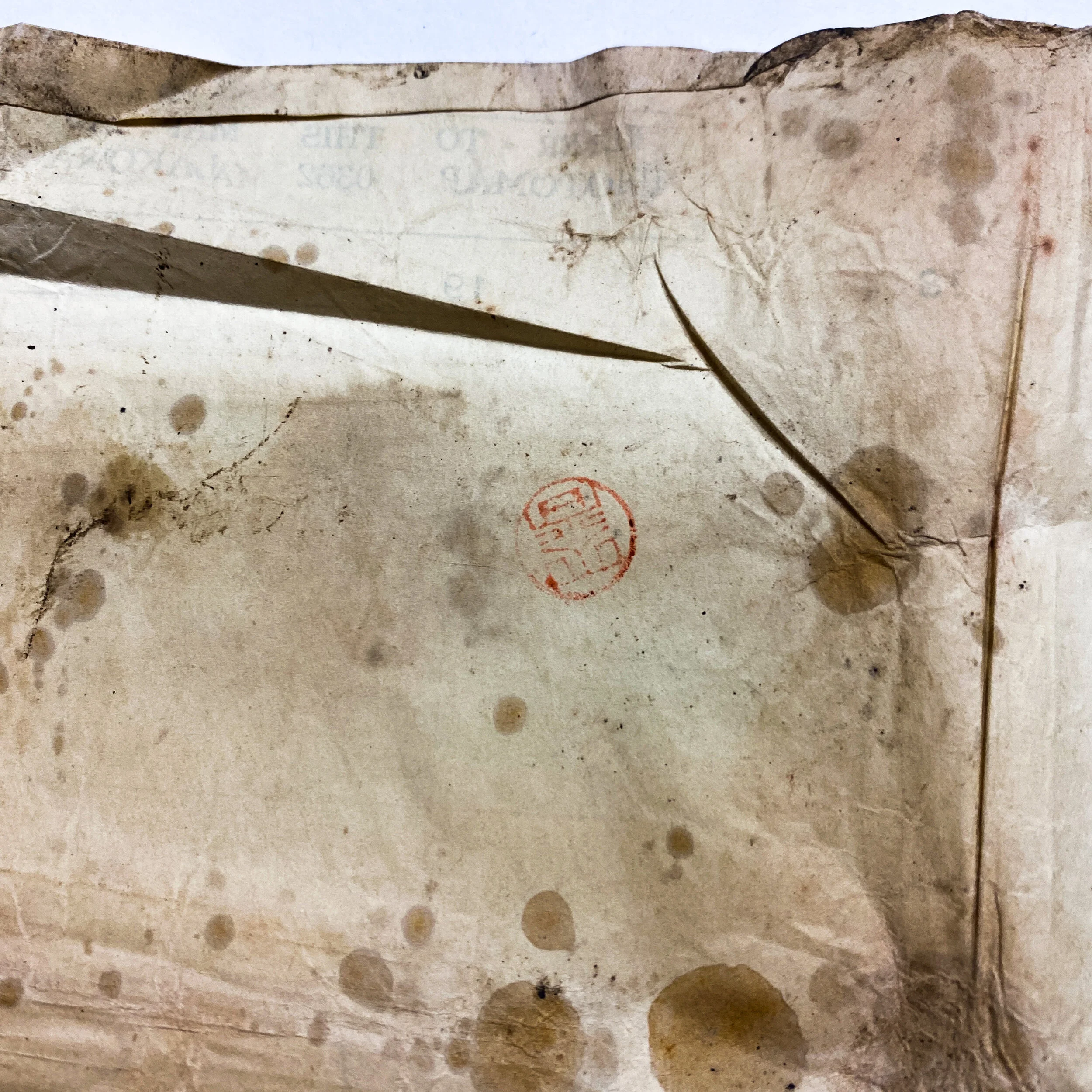
*EXCLUSIVE* New Guinea (Lakona) - Huon Peninsula Campaign - 8th Photo Squadron Aerial Reconnaissance Map
Museum Grade WWII New Guinea (Pacific Theater) Artifact:
Size: 22.5 x 17.75 inches
This is an extremely rare and salty aerial reconnaissance map of the once Japanese held island of New Guinea. This reconnaissance map shows a full gridded and air map of the Lakona and was taken by the 8th Photo Squadron - 5th Air Force. This map took 3 missions to fly over and complete the map. These missions are denoted and marked in the lower left as missions 293Y, 294Y, and 297Z. The map is a compilation of the 1st Australian Mob. Litho. Sec. (AIF) and the Australian Survey Corps. being dated November of 1943. The map has both miles and meter mark conversions for distance marking as well as] notations for 'constructed roads, main tracks, and probable tracks of the Japanese. The map features some of the most infamous section of the Huon Peninsula campaign and shows Kamlagidu Point, Cape Sibida, Lakona, the “cliffs”, the Masaweng River, and the Sanga River.
Lakona:
As they advanced, the Australians came up against stiff resistance, as Japanese forces in the area fought hard to buy time for the forces falling back from Wareo by delaying the Australian advance. Initially, the 22nd's attack was turned back; however, fire support from artillery and armor helped overcome this opposition, and the advance continued with the 22nd and 29th/46th Infantry Battalions advancing in turns up the coast with the 37th/52nd moving on their left further inland. Lakona was reached on 14 December and, after finding the Japanese forces there to be positioned in strength, the 22nd Battalion worked its way around the town, enveloping the Japanese defenders and pushing them back to the cliffs, where on 16 December tanks were used to launch the final attack. After this, the 29th/46th took over the coastal advance to Fortification Point, which it reached alongside the 37th/52nd on 20 December, crossing the Masaweng River and gaining the high ground to its north.
Huon Peninsula Campaign:
The Huon Peninsula campaign was a series of battles fought in north-eastern Papua New Guinea in 1943–1944 during the Second World War. The campaign formed the initial part of an offensive that the Allies launched in the Pacific in late 1943 and resulted in the Japanese being pushed north from Lae to Sio on the northern coast of New Guinea over the course of a four-month period. For the Australians, a significant advantage was gained through the technological edge that Allied industry had achieved over the Japanese by this phase of the war, while the Japanese were hampered by a lack of supplies and reinforcements due to Allied interdiction efforts at sea and in the air.
The campaign was preceded by an amphibious landing by troops from the Australian 9th Division east of Lae on 4 September 1943. This was followed by an advance west along the coast towards the town where they were to link up with 7th Division advancing from Nadzab. Meanwhile, Australian and US forces mounted diversionary attacks around Salamaua. Heavy rain and flooding slowed the 9th Division's advance, which had to cross several rivers along the way. The Japanese rear guard also put up a stiff defense and, as a result, Lae did not fall until 16 September, when troops from the 7th Division entered it ahead of the 9th, and the main body of the Japanese force escaped north. Less than a week later, the Huon Peninsula campaign was opened as the Australians undertook another amphibious landing further east, aimed at capturing Finschhafen.
Following the landing at Scarlet Beach, the Allies set about moving south to secure Finschhafen, which saw fighting around Jivevaneng also. In mid-October, the Japanese launched a counterattack against the Australian beachhead around Scarlet Beach, which lasted for about a week and resulted in a small contraction of the Australian lines and a splitting of their force before it was defeated. After this, the Australians regained the initiative and began to pursue the Japanese who withdrew inland towards the high ground around Sattelberg. Amidst heavy fighting and a second failed Japanese counterattack, Sattelberg was secured in late November and the Australians began an area advance to the north to secure a line between Wareo and Gusika. This was completed by early December, and was followed by an advance by Australian forces along the coast through Lakona to Fortification Point, overcoming strong Japanese forces fighting delaying actions.
The final stage of the campaign saw the Japanese resistance finally break. A swift advance by the Australians along the northern coast of the peninsula followed and in January 1944 they captured Sio. At the same time, the Americans landed at Saidor. After this, mopping up operations were undertaken by Allied forces around Sio until March and Madang was captured in April. A lull period then followed in northern New Guinea until July when US forces clashed with the Japanese around the Driniumor River. This was followed by further fighting in November 1944 when the Australians opened a fresh campaign in Aitape–Wewak.